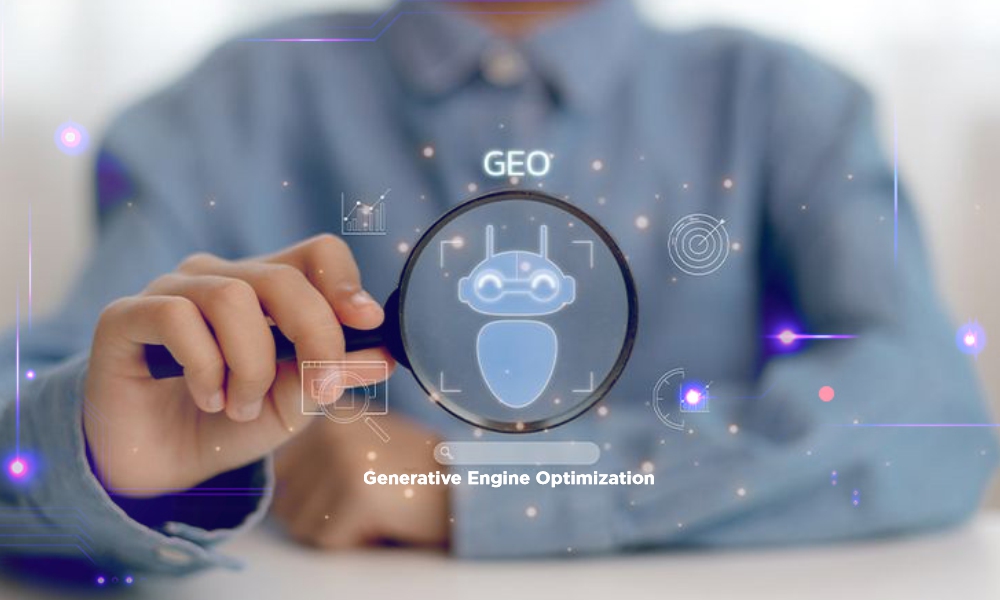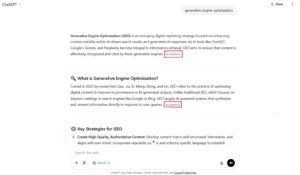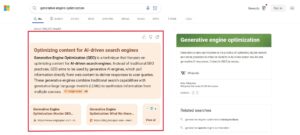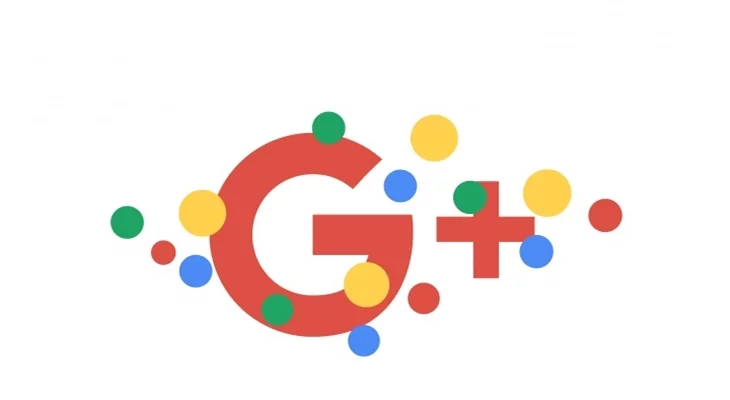We all know about search engine optimization and ranking tricks on the search engine. But the search practices are advancing, and generative engine optimization (GEO) has become the new normal at present. The old method of depending solely on keywords has changed with value-added, experience-enhancing methods. Such an advancement is surely reshaping traditional search marketing tactics.
AI's impact has been remarkable across industries, including the search practices, which gave birth to AI-driven search engines and GEO. According to research, optimizing webpages and content for generative engines can boost visibility by 30-40%. Therefore, optimizing content for AI-driven search engines is an essential step companies should take for greater success.
Let us understand GEO more extensively, alongside assessing how it differs from SEO, its importance, and how it works while optimizing webpages for AI-driven search engines.
Understanding Generative Engines: A Closer Look!
Generative engines are upgraded versions of traditional search engines that involve AI capabilities. These are the generative AI models like ChatGPT or Perplexity that help people get their desired answers. As the user needs and search intents continuously evolve, the search methods also advanced with AI integration. Such incorporation made it easy to meet the diverse needs of the audience every time efficiently.
Contrary to traditional search engines and their listing format of results to queries, generative search provides summarized answers or briefs to queries with reference to multiple sources. Simply put, AI-driven search engines specifically focus on search intent and the E-E-A-T standards. The core objective of this method of search is to enhance the user experience with relevant and appropriate results.
Considering the popularity and enhanced dependency on AI models for search, Google introduced Search Generative Experience (SGE), which is now known as AI Overview. This section appears at the top of Google search after someone makes a query.
Here are a few examples of generative engines and how the results appear there-
Google's AI Overview:
While conducting a search, Google's AI Overview offers a summarized version of the results alongside the links to the sources. The links that appear on the right side are the sources matching the ranking standards of the generative engine.
ChatGPT Search:
The results on ChatGPT are briefs of key components of the topic that have been searched. Following every section or paragraph, users can find the link to the original source.
Bing's Copilot:
Similar to Google AI Overview, Microsoft's Bing uses Copilot to summarize results alongside the links to the actual sources.
What is Generative Engine Optimization?
Generative engine optimization refers to adopting methods to get cited on AI-enabled generative engines like ChatGPT, AI Overview, Copilot, Gemini, and others. It is a typical methodology to boost visibility on LLMs and generative AI engines. Contrasting with traditional search engines that offer links to sources where individuals may find solutions to their problems, generative engines generate targeted, extensive, and relevant answers to the problems based on multiple sources.
With changing search behavior, the number of regular users of generative models like ChatGPT is continuously increasing. So, it is necessary for brands and websites to optimize their content for generative engines.
GEO involves significant AI and ML capabilities to analyze the user intent behind each search and large datasets available online while finding and generating the most relevant and appropriate outcomes. It focuses on contextual relevance between a query and the offered outcomes.
How is GEO Different from SEO?
Both SEO and GEO intend to offer relevant search results after every search. However, both possess significant dissimilarities. Let's discuss a few below-
Diverse Goals: SEO boosts visibility on search engine page results (SERPs). On the other hand, GEO increases visibility on LLMs and generative AI engines, such as ChatGPT, Gemini, Bing, and others.
Ranking Factors: SEO prioritizes elements like keywords, meta tags, domain authority, and backlinks for ranking. In contrast, GEO assesses language, contextual relevance, user intent, citations, and statistics for ranking.
Display of Results: SEO offers links to the relevant web pages as a result of searched queries. Conversely, GEO provides real-time AI-generated summarizations of a topic that has been searched for, depending on multiple sources.
Metrics to Analyze: SEO performance and success are measured by assessing website traffic, impressions, click-through rate, and conversions. On the other hand, GEO analyzes citations in generative AI results and engagement with users to measure success.
How does GEO Work?
Generative AI engines rely on sophisticated machine learning and large language models, which help in analyzing large amounts of data alongside creating appropriate summaries for search results. Each model is trained on vast datasets, which enables generative engines to understand and generate in-depth human-like results.
Therefore, GEO evaluates the relevance of the user intent of a search and content on a webpage while citing it on generative engines.
Let's understand the process of GEO thoroughly in the following stages-
Assess the Search Intent:
Generative or AI-powered search engines include large language models (LLMs) trained on billions of datasets. These models assist in tracing patterns, relationships, and contexts within search input and content across numerous web pages.
Content Evaluation:
Generative engines analyze content within a webpage thoroughly to measure contextual accuracy, content quality, freshness, authority, credibility, multimedia integration, and others to validate them to get cited after a search. These are major criteria for ranking on the generative engine.
Processing a Search and Scanning:
Generative AI doesn't focus much on keywords; rather, its emphasis is always on understanding the search intent and what a searcher is looking for. After comprehending the question, generative AI scans and identifies the key concepts of the searched topic from different indexed sources.
Generating Results and Citing Sources:
Based on the assessed question and content, GenAI generates a descriptive output in easy-to-understand language covering all the key elements of the searched topic. Each section carries the link to its source.
Examining the Importance of Generative Engine Optimization:
Since people nowadays want quicker and more efficient solutions to their problems, brands aiming to get identified and fulfill the needs of the audience must optimize their sites for generative engines. Below are the unavoidable advantages of the same-
Remarkable Content Visibility:
Millions of user access and use generative search engines every day worldwide to fulfill their search needs. Hence, optimizing content and websites for generative search can boost visibility among diverse audiences, expanding reach significantly.
Attain Opportunities to Increase Organic Traffic:
Generative engine optimization and citation on LLMs can help in attracting higher organic traffic. Experts assert that clicks made on AI-driven searches are more valuable than search engines. Hence, traffic generated through GEO is more valuable and near conversions.
Enhanced Content Quality and User Experience:
Meeting the ranking and citation standards of generative engines makes brands create high-quality and valuable content, incorporating appropriate multimedia integration. Such an approach not only offers knowledge to the audience but also assists in solving real-life problems and enhancing the user experience.
Elevated Brand Credibility and Authority:
Since generative engines assess numerous sources and sites, getting cited here bears significant value, which contributes to enhanced brand credibility. Furthermore, if any brand targets a specific topic and gets cited on AI-driven searches, it establishes brand authority.
Stay Aligned with the Evolving Search Strategies:
GEO is a prevailing trend in the world of search, and it also defines the latest and most effective digital marketing practices. Hence, generative engine optimization also allows brands to adopt the newest practices.
How to Optimize Content and Webpages Generative Engine?
Create High-quality, Clear, and Easy-to-Understand Content:
Quality content alongside contextual relevance is the key to successful generative engine optimization. The usage of clear and understandable language is highly recommended.
Research and Incorporate Effective, Long-tail Key Phrases:
Since GEO is not only about keywords, aiming for long-tail key phrases can be beneficial. Such an approach helps in staying relevant with search intent.
Focus on Technical SEO and Page Visibility:
Optimizing technical SEO enables websites to ensure that web crawlers and AI models can access, crawl, analyze, and index their pages and content. It allows AI models to assess your content and cite it accordingly if it is relevant.
Support Your Content with Appropriate Links and Multimedia:
Valuable content includes relevant links and multimedia to enhance quality and user experience. Hence, it also assists in GEO.
Prioritize Usability and User Experience:
Ensure your website offers high usability with an attractive and easy-to-understand design alongside navigation. It boosts user experience, which is a core aspect of generative engine optimization.
You can also refer to our recent blog on ranking factors for AI snippets, where we have covered Google's suggestions to boost rankings on the AI Overview.
Contemplating the Future!
Search is doubtlessly evolving, and generative AI has been a core player in this process. With a primary focus on user experience, generative engines are determined to offer search results that are valuable and beneficial to the audience. So, while keeping up with the search trends and sustaining growth, brands must adopt strategies to elevate visibility on AI-driven search engines.
However, with rapid advancements in AI and ML, we may expect further changes in search behavior and audience needs in the upcoming years. Under such circumstances, companies must stay prepared and brace for what is next.
Read more insightful and extensive blogs with KnowledgeNile!
You might like:
Gen AI vs NMT: Is Generative AI a Real Challenge for the Translation Industry?








